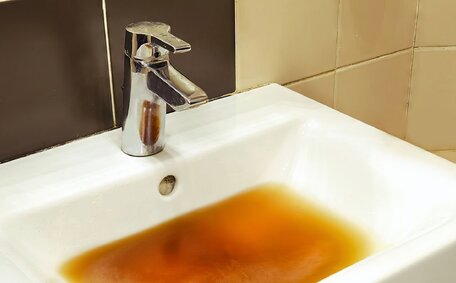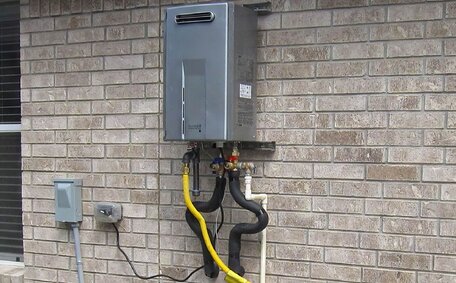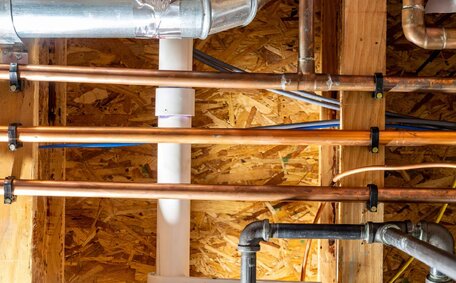Understanding Gas Line Installation
Gas line installation involves connecting your home or business to the main gas supply in your street and fitting necessary appliances. Licensed gas fitters route the lines to your meter box and devices requiring gas, ensuring proper connection and functionality.
Natural gas connections come in various forms, including underground pipelines and propane tanks that require regular refilling. A licensed professional should manage installations for safety and cost effectiveness, as improper installations pose serious risks like gas leaks and explosions.
Step-by-Step Process for New Gas Line Installations
Qualified gas fitters should undertake new gas line installations due to the complexity. Here’s a summary of the key steps and expected timeline for establishing a residential natural gas connection:
- Firstly, secure approval from your gas provider to extend the main gas line to your street, initiating the project. Expect this to take 5-10 business days.
- A detailed site inspection determines the most efficient path for your gas line based on your home’s layout. Subsequent plans are submitted to the council for approval, which may take 2-4 weeks.
- After approval, installation commences, involving careful trenching or drilling to lay gas pipes and connect indoor appliances. This phase typically requires 1-5 days.
- Pressure testing using leak detection techniques reveals any system leaks that require immediate resolution.
- With all tests and inspections passed, your meter installation is meticulously carried out by your gas provider, finalising the entire setup. This component of your installation typically spans just 1 business day.
The entire gas line installation process generally takes 4-8 weeks from start to finish. However, factors like approvals, access difficulties, or variable natural gas demand could lead to delays. Speak with your gas plumber to ensure your service is on track.
Factors That Influence Timelines
Several factors can influence how long it takes to complete a gas line installation:
Property Size and Layout
More extensive properties require longer gas lines across their boundaries, resulting in extended installation times due to the greater distance to connection points. Multi-level structures or complex site access may also extend the timeline for connecting your gas line. Single residential properties typically see installations completed in 1-5 days, while larger properties might need up to 2 weeks.
Pipe Length
Longer pipe installations obviously take more time. As a rule of thumb, Skilled gas fitters typically lay around 30 metres of piping daily. So for a 100m run, allow 3-4 days.
Permits and Paperwork
Before commencing work, obtaining necessary council permits can cause delays of 2-6 weeks, depending on the area. Using expedited services may reduce the wait time for approvals.
Weather Delays
Heavy rain, storms, or sweltering days over 35°C can take a toll on external pipeline work at your residence, potentially causing brief interruptions. Though gas fitters plan for weather issues, unforeseen changes can lead to work stoppages. This prolongs overall timeframes by a few days usually.
By understanding these key timeline factors, you can plan effectively and work with your gas fitter to expedite the gas line installation your property requires.
Safety Considerations and Prevention
Gas line installation involves significant safety risks if not conducted properly. Adhering to legal requirements and taking preventative measures is critical.
Potential Hazards
Inferior workmanship or materials can lead to hazardous gas leaks without proper installation and repair safeguards. Prolonged exposure, even to small quantities of leaking gas, may lead to headaches, nausea, or drowsiness. Substantial leaks may lead to dire outcomes such as explosions and fire hazards, or worse, asphyxiation; it’s critical to address these immediately, turning the gas off and seeking professional help.
Prevention Tips
- Only employ licenced gas fitters for installing gas infrastructure or performing alteration work
- Ensure your gas plumber verifies your gas line connected with thorough leak testing before sign-off
- Install and maintain carbon monoxide detectors for early leak detection
- Never attempt DIY gas line work yourself
- Annual inspections help identify deterioration requiring repair
Following safety codes and using quality materials vastly reduce risks where there’s potential for danger during and after installation. Your trusted local gas fitting professionals make safety their top priority to protect you and your family.
Hiring a Professional Gas Fitter
Installation or repair of gas lines should be managed exclusively by a licensed gas fitter, who has the necessary specialised skills and certifications. DIY gas work can pose risks such as leaks, explosions, or injuries; it’s advisable to engage fully certified professionals.
Choosing an Experienced Professional
Look for a licensed gas fitter with positive reviews, insurance, and expertise in gas line installation. They should also possess qualifications from recognised bodies.
Our certified experts at Vaucluse Plumbing bring over ten years of experience to provide a full range of gas installation and maintenance services.
The Benefits of Professional Services
Our skilled gas fitters ensure outcomes that adhere to legal standards and best practices, offering you peace of mind about your family’s safety.
Our vast experience enables us to conduct repairs swiftly, often within the same day, always prioritising safety.
1300 349 338.
Gas Line Maintenance Tips
Test Gas Lines Annually
Know the Signs of a Gas Leak
Be alert to the common signs of a possible gas leak: the distinctive "rotten egg" odour infused in natural gas as a safety measure, erratic appliance performances, dead vegetation patches, or the presence of bubbling in standing water over in-ground gas conduits. If suspected, evacuate immediately and call emergency services.
Keep Outdoor Vents Clear
Ensure leaves, debris and snow do not block external gas appliance vents, reducing ventilation. Blocked flues may allow dangerous carbon monoxide to accumulate indoors where there no proper ventilation.
By regularly inspecting your gas lines and following vital safety measures, you minimise risks to your household. Our experienced Vaucluse gas fitters assist natural gas many homeowners to maintain what’s needed for safe, efficient gas connections.
Cost Ranges and Fees
The cost to install a new gas line or enable natural gas flow through your connection to a main gas supply typically ranges from $1,500 to $7,000 for standard residential dwellings. However, the average cost of your project will ultimately depend on the pipe length needed, difficulty of the installation, and current market conditions.
Connection and Supply Fees
Your gas provider will charge fees for the connection service and account activation upon linking your new setup to a supply. Expect to pay:
- Connection fee: $500 - $1,500
- Account activation fee: $100 - $300
These fees encompass administration, site inspection, and the initial connection work.
Installation Cost per Linear Foot
The bulk of expense relates to the gas pipeline installation per linear foot. In Vaucluse, for your new home, you can expect to pay:
- $15 - $25 per foot for outdoor pipework
- $30 - $50+ per foot for indoor lines
For example, at a rate of $20 per foot for a 100-foot outdoor line installation, the labour cost would be $2,000.
What Can Increase Costs?
Complicated jobs with longer pipe runs, multi-story builds, or tricky access can increase per foot pricing and overall cost. Specialist equipment for road bores or site issues may also be required at additional expense.
At Vaucluse Plumbing, Our qualified gas specialists can deliver detailed quotes tailored to your gas connected needs post a no-obligation site inspection.
Frequently Asked Questions
How long does installing a new gas line take?
Typically allow 4-8 weeks for a complete new gas service line installation to a residential property not previously connected. The process involves planning, permits, trenching, pressure testing and final connection. Experienced gas fitters can usually complete the physical pipeline installation within 1-5 days once approvals are in place.
What are the steps in the gas line installation process?
The main steps are: applying to the gas distribution network, performing a site inspection and subsequent planning, awaiting installation approval, trenching, and laying gas pipes, conducting pressure tests for leaks, and the final hook-up and meter connection are steps that cumulatively does take a set duration.
We assist in navigating the complexities of gas installations, despite challenges like inclement weather, multi-storey construction, or lengthy approval processes. Additionally, extensive jobs with longer pipe runs require more time to complete.
Is it safe for me to install a gas line myself?
No. Gas line installations should only ever be handled by fully qualified and accredited gas fitters due to the technical complexity and extreme danger if leaks or issues are not correctly handled.
Why choose Vaucluse Plumbing for my gas line installation?
Boasting over 10 years of specialised experience, our expert Vaucluse gas fitting team is fully certified and insured, consistently delivering excellence to meet our clients’ needs. Our clients can rest assured knowing that we follow best practises and standards for reliable, high-quality outcomes with safety as our priority.






